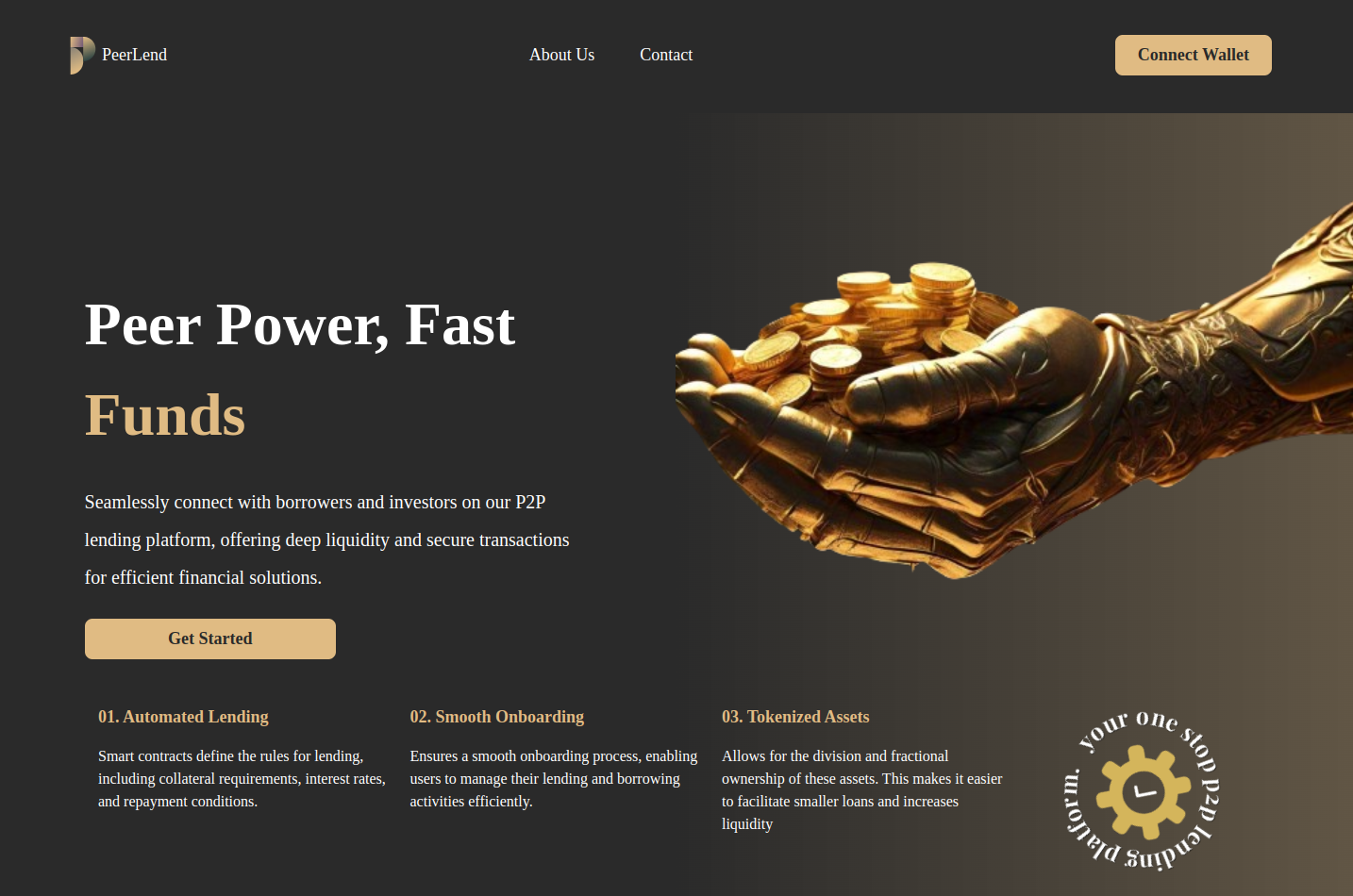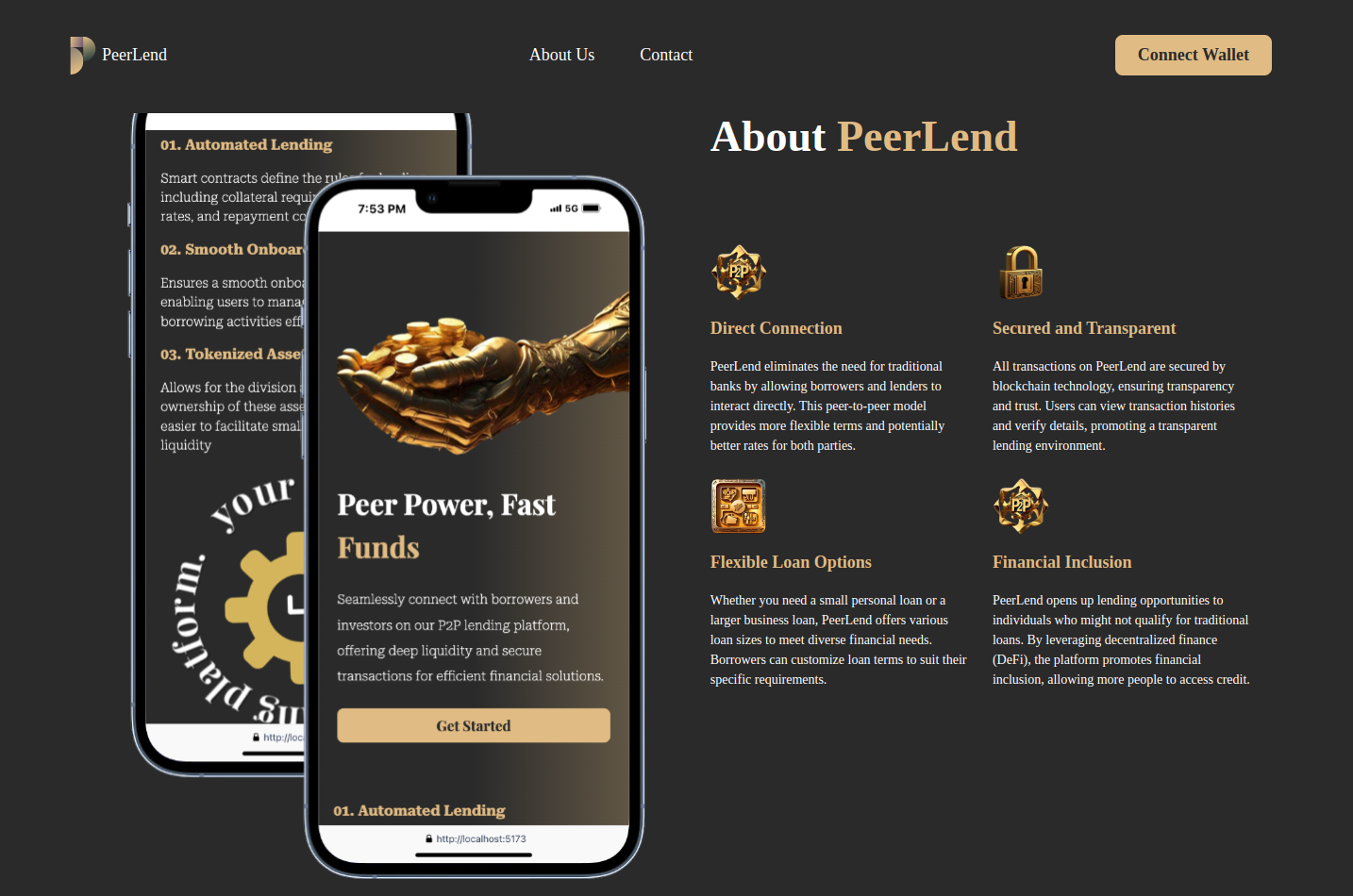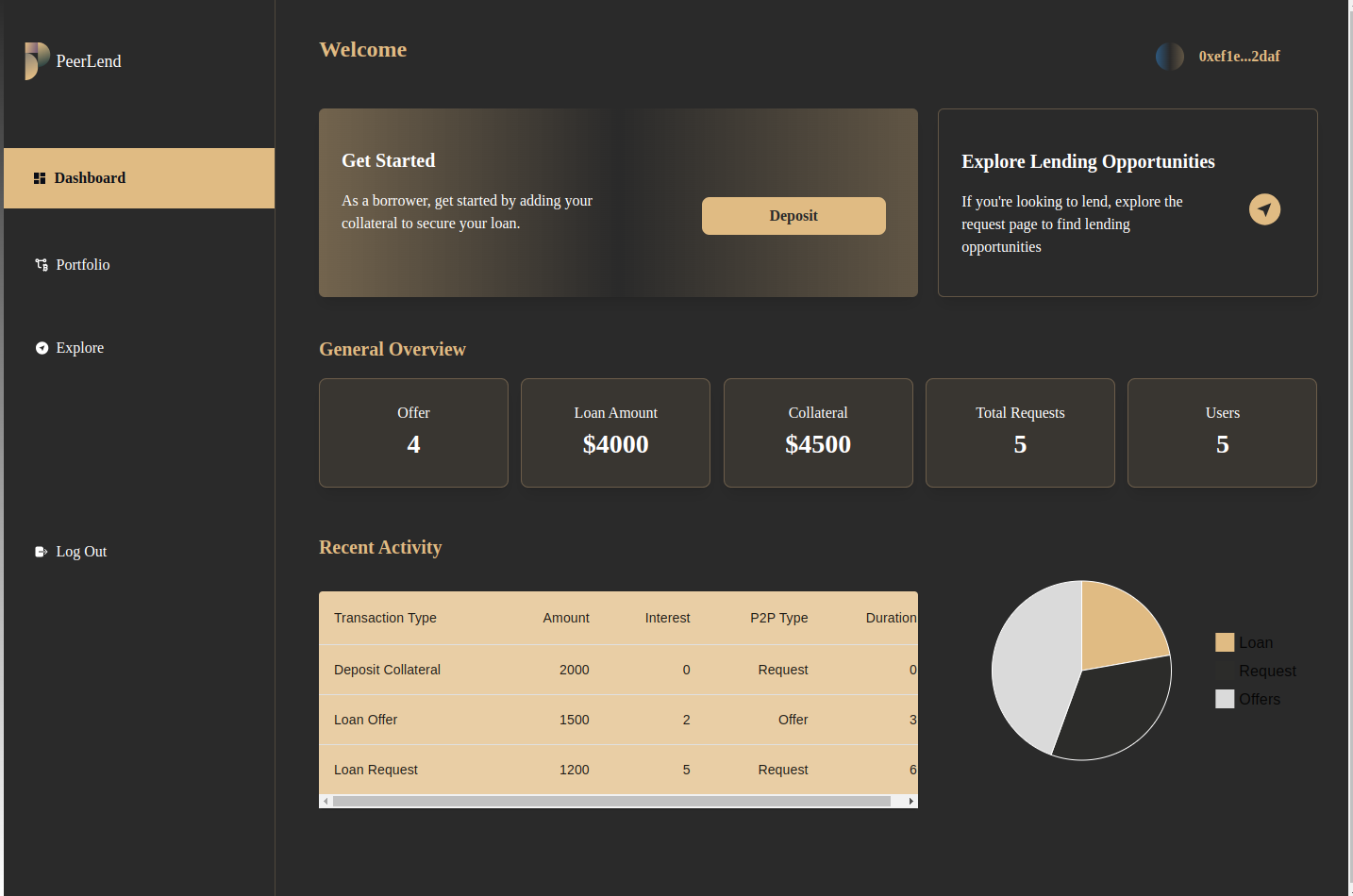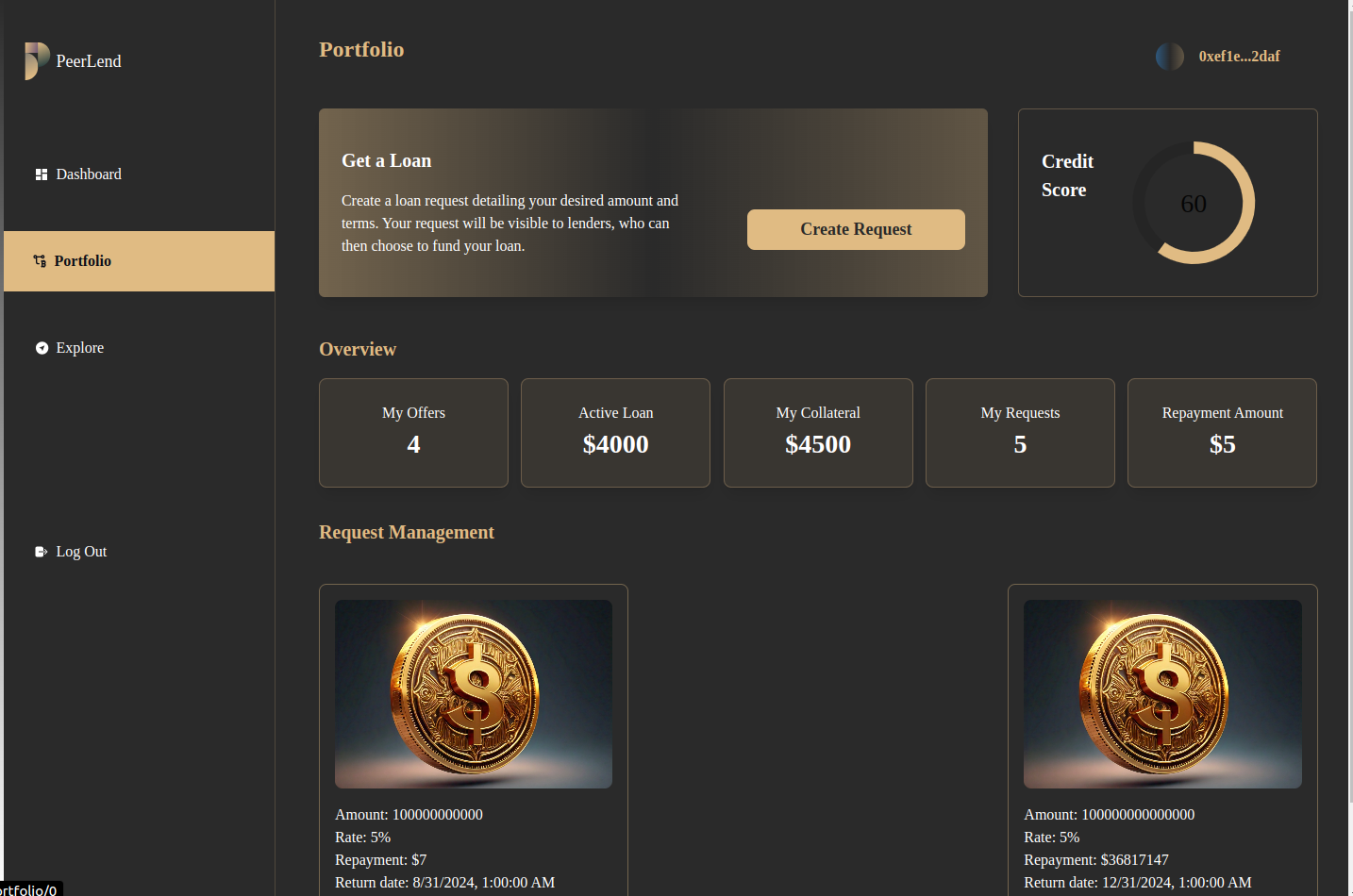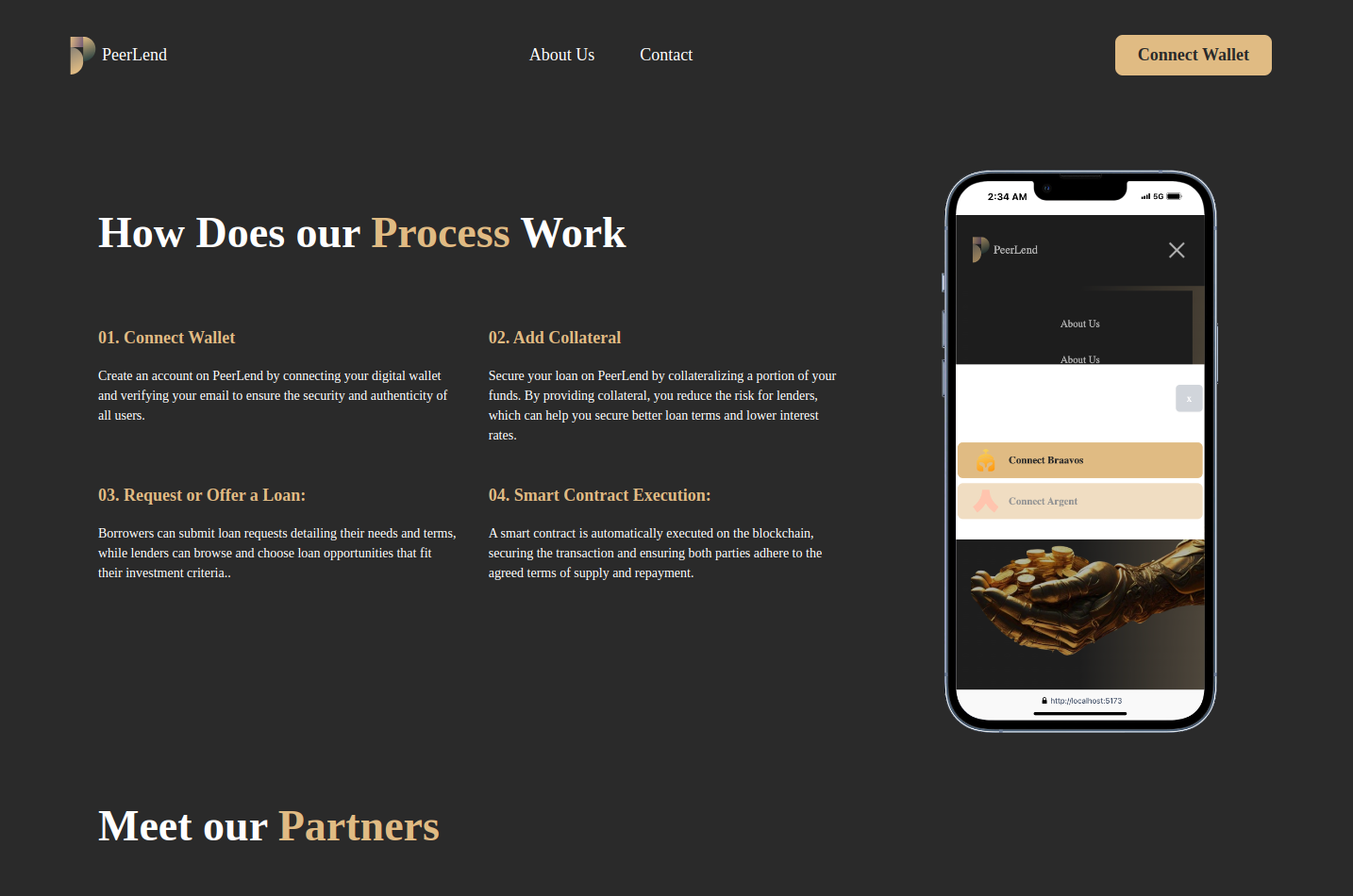PeerLend
A P2P lending and borrowing platform that allows users to borrow using flexible rates and personalized offers.
Project Description
In the rapidly evolving world of decentralized finance (DeFi), platforms like Aave and Compound have paved the way for accessible borrowing and lending. However, these platforms often leave users feeling constrained. Borrowers are subjected to inflexible interest rates and limited options, while lenders lack the assurance of truly personalized engagements. What if there was a way to revolutionize this space, giving users unprecedented control and flexibility over their financial transactions? This question sparked the creation of PeerLend.
Imagine a borrower who needs a loan but can’t find the right terms. They’re forced to accept high interest rates and rigid repayment plans. On the other hand, consider a lender looking for investment opportunities, yet unable to find borrowers who meet their specific criteria. The current DeFi landscape offers no solution for these issues.
PeerLend emerged from the desire to empower users to take control of their financial destinies. We envisioned a platform where borrowers can specify their exact needs and lenders can provide offers that match or partially match these requests. This level of personalization and control is unprecedented in the DeFi space, and it’s what makes PeerLend truly revolutionary. Our inspiration was driven by the need to create a more inclusive and user-centric financial ecosystem, where both parties can negotiate terms that suit them best, fostering a sense of trust and mutual benefit.
PeerLend is a groundbreaking platform that brings a new level of sophistication and user empowerment to the DeFi space. Here’s how:
Custom Loan Requests: Unlike the rigid structures of Aave and Compound, PeerLend allows borrowers to create loan requests tailored to their specific needs. Borrowers can set their desired loan amount, interest rate, and repayment period. Personalized Offers: Lenders can review these requests and propose offers that fully or partially meet the borrower’s terms. This creates a dynamic marketplace where users can negotiate and find mutually beneficial agreements. Smart Collateral Management: To ensure financial safety, users can collateralize assets and manage multiple loan requests without exceeding 85% of their collateral value. This approach provides flexibility while maintaining security.
In the future, we intend to add the following features to the project: Automated Liquidation: Leveraging Chainlink automation, PeerLend ensures that collateral liquidation is seamlessly triggered when necessary, protecting lenders and maintaining platform integrity. Real-Time Email Notifications: Integrated email services provide instant notifications for offers, requests, and important activities, keeping users informed and engaged. Decentralized Governance: A DAO enables users to vote on platform changes, ensuring that PeerLend evolves in line with the community’s needs and preferences.
How it's Made
Building PeerLend required leveraging the latest technologies and integrating them into a seamless user experience. Here’s an overview of our tech stack and development process:
Cairo Smart Contracts: We used Cairo to write smart contracts that handle loan requests, offers, and collateral management. These contracts ensure security and transparency in all transactions. Pragma Data Feeds: To fetch real-time token price feeds, we integrated Pragma data feeds, ensuring accurate collateral valuations and protecting users from market volatility. Starknet React Frontend: Our frontend is developed in Starknet React, and provides a sleek and intuitive user interface, making the platform accessible and user-friendly. StarknetJs: StarknetJs is used to deploy the smart contract and make the first contract call which registers the tokens allowed and their respective datafeed IDs.
@Argent wallet is used in testing the frontend during development and integration.


